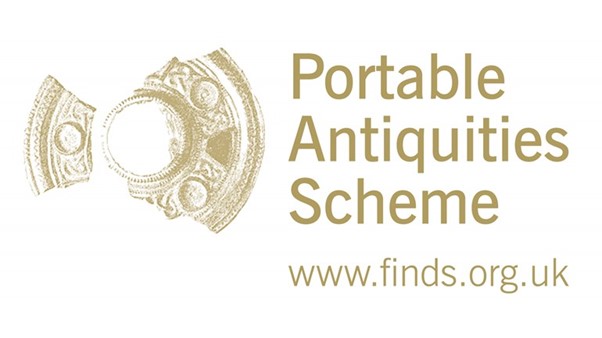Metal detecting has long been a popular pastime, as people head into the great outdoors and search for objects from recent to even ancient history.
In this new blog, we are joined by Philip Smither, Berkshire Finds Liaison Officer, who tells us about the Portable Antiquities Scheme (PAS), a national programme dedicated to improving our understanding of the history of England and Wales, one archaeological find at a time.
What is the Portable Antiquities Scheme?
The Portable Antiquities Scheme was started in 1997 in response to the 1996 Treasure Act. Although the Act required the reporting of treasure, there was no requirement for non-treasure items to be reported. The PAS allowed finders to report and record all objects they found on the scheme's online database to build up knowledge of the archaeology and history of England and Wales and protect this important data from being lost.

Copyright: The Portable Antiquities Scheme, License: CC-BY 2.0
Objects are reported to the scheme through Finds Liaison Officers (FLOs). There are currently 42 FLOs across the country, largely based around the county system. Finders can bring their finds to their nearest FLO who will identify them and add them to the database. In order to record finds, FLOs request that the finder provide us with the findspot to the highest resolution possible (usually a ten figure National Grid Reference) and the date it was found. The findspot is probably the most important piece of data on the record. It gives the object some provenance and context. This data will then be used in a number of ways, most notably in academic studies to tell the history of these objects across the country.
For my own part, I am currently using PAS data to develop a typology and distribution of Roman strap ends in Britain (SUR-D32237). These objects were found on the end of a belt strap and were part of a set with the buckle and other belt fittings. Studies like this help us understand how these objects developed over time and potentially their users.

A late Roman strap end, shaped like an amphora. The strap end has two loop attachments, one of which is now missing. Object number SUR-D32237. Copyright: The Portable Antiquities Scheme, License: CC-BY 2.0
It also allows us the see patterns in the data.
Brooches from every period have been widely studied and the PAS has added to this knowledge, particularly relating to regional developments. The distribution of this type of Iron Age brooch (BERK-D83302) shows that it was developed around the border of what is now Berkshire/Vale of the White Horse.

An incomplete cast copper alloy brooch dating to the Middle Iron Age. Object number: BERK-D83302. Copyright: The Portable Antiquities Scheme, License: CC-BY 2.0
Knowing this, we can then see the potential spread of the culture behind these objects. These brooches as a whole do not spread very far outside this region, however, quite oddly, one was found in Yorkshire. This would suggest long distance travel of someone wearing one of these brooches rather than the spread of production.
Through the reporting of treasure to the PAS it also allows important objects to be saved and acquired by national and local museums. Finds found in a particular country are reported to the British Museum treasure team and the county coroner. From there it is determined whether a museum is interested in acquiring the object for its collection. If this is the case, a valuation is determined for the object and the ‘reward’ is split between the finder and landowner. However, in many cases the finder and/or landowner waive their right to the reward or take it to donate to local causes.
West Berkshire Museum has recently finished acquiring three treasure items: a gold Roman ring with an intaglio, a silver Medieval ‘AGLA’ pendant, and the gold and silver post-medieval dress hook (BERK-93DC8A) that you can see below:

An incomplete silver-gilt dress hook/hooked clasp, dating to the post-medieval period. Object number BERK-93DC8A. Copyright: The Portable Antiquities Scheme, License: CC-BY 2.0
You can read more about these and our work in the local area on the PAS Berkshire county blog. An aim of the PAS is to be able to share these items with the public, whether through museums or online, so check out the website if you are interested in finds from Berkshire or elsewhere. You can also see more interesting finds on the local PAS social media accounts (Twitter and Instagram), and at the West Berkshire Museum's website and social media (Twitter and Instagram).





